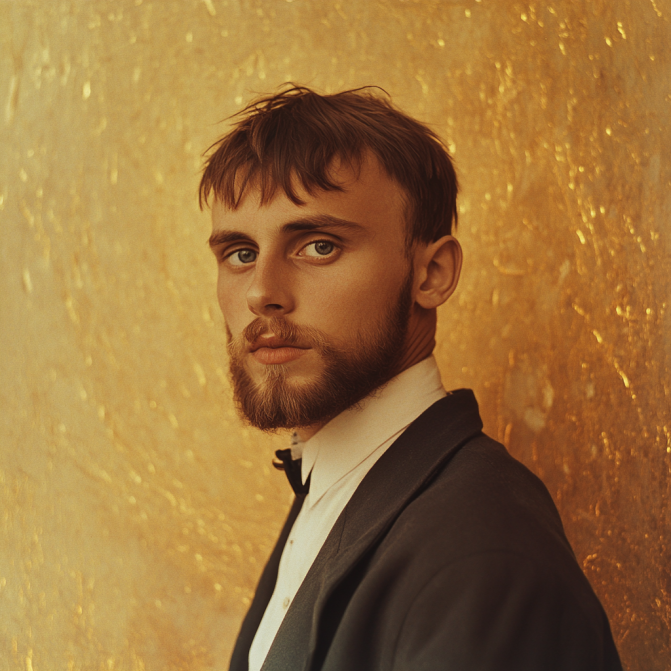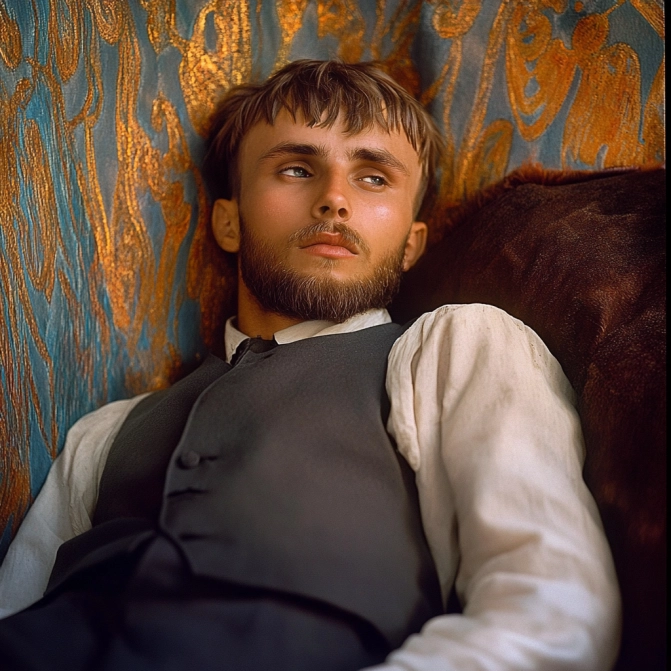Gustave Klimt (GOOS-tahv Klimt)
Artist
Gustave Klimt
Gustav Klimt was born on July 14, 1862, in Baumgarten, a suburb of Vienna, in what was then the Austrian Empire. The son of a gold engraver, Klimt grew up in a family that valued artistry and craftsmanship, which would later influence his own work. He showed early talent in art and attended the Vienna School of Arts and Crafts, where he studied architectural painting. Alongside his brother, Ernst, and a fellow artist, Franz Matsch, he formed the "Company of Artists," painting murals and ceilings in large public buildings.
Klimt’s artistic style underwent a dramatic shift in the 1890s when he began incorporating more symbolic and sexual themes into his work, much to the controversy of the Viennese art world. He co-founded the Vienna Secession in 1897, a group of artists dedicated to breaking away from academic art traditions and embracing more modern, progressive styles. It was during this period that Klimt developed his distinctive "Golden Phase," where he incorporated gold leaf into his paintings, giving his work a shimmering, otherworldly quality.
Some of Klimt’s most famous works from this period include The Kiss (1907–1908) and Portrait of Adele Bloch-Bauer I (1907). These works are celebrated for their sensuality, use of intricate patterns, and gilded beauty, reflecting Klimt's fascination with the female form and his mastery of decorative elements. His work often explored themes of love, death, and the erotic, pushing the boundaries of acceptable artistic expression in his time.
Throughout his life, Klimt remained devoted to his art and was known for being a private man, living modestly despite his artistic success. He never married but was known to have several close relationships, particularly with Emilie Louise Flöge, his lifelong companion and muse. His relationships with women often influenced the sensuality present in his work, especially in his portraits of women.
Gustav Klimt passed away on February 6, 1918, after suffering a stroke, compounded by pneumonia during the Spanish flu pandemic. He left behind a legacy as one of the most influential artists of the early 20th century, with his work continuing to captivate audiences with its blend of beauty, eroticism, and symbolism.
Photo Album
Photo Album
Mental characteristics
Sexuality
Klimt was known for his sensual art and free-spirited approach to sexuality. While most of his affairs were with women, the eroticism and androgyny in his art, combined with Vienna's bohemian scene, suggest a possibility of experimentation or at least attraction beyond strict heterosexual norms.

Species
Realm
Date of Birth
July 14, 1862 CE
Date of Death
February 6, 1918 CE
Life
1862 CE
1918 CE
56 years old
Circumstances of Death
Klimt died following a stroke he suffered in late 1917, which was then complicated by pneumonia, likely worsened by the influenza pandemic (Spanish flu) that was prevalent at the time.
Birthplace
Baumgarten, Vienna, Austrian Empire
Place of Death
Vienna, Austria
Children
Sex
Male
Sexuality
Heteroflexible




















